What is the advantage of planting tulips in bulb baskets and how to do it correctly?
New technologies are coming to summer cottages, making it easier for owners to care for plants. Why dig up the ground every summer looking for tulip bulbs when they can be planted in baskets and containers? The flowers have withered and no longer adorn the flower bed, and it is too early to dig the underground part, it is not yet ripe for development in the next season. The question is solved simply: take out the basket, and in its place the planting of seedlings of summer flowers begins. You can dig a container with rhizomes in an inconspicuous corner of the site, the tubers will continue to develop and will not notice the transplant.
Advantages and disadvantages of the new method
Any method has both supporters and opponents, the arguments of both sides are quite convincing. A flower grower must understand that he does not work at a conveyor belt with metal blanks and not in a laboratory, but in living conditions. You do not have a perfectly matched soil composition, it is impossible to maintain optimal temperature and humidity, you need to learn to work with what you have and understand the needs of your “pets”. Depending on the situation, for one owner, the plants will feel great in containers, while for another, the flowers will not like this planting.
Let's see what is preferable to grow in baskets and containers.
- Saving planting material: the bulbs are not injured, it is possible to find even very small "babies" in the ground.
- Rodents and large insect pests will not penetrate through the small cells of the basket to the bulbs.
- If the land on the site is bad, there is no need to apply compost and humus to the entire flower bed. You can fill the container with the most suitable soil for the flowers.
- When the tulips have faded, you can immediately remove the container from the flower garden and make room for planting other plants.
- If you plant each type in a separate container, you will never mix up the types of bulbs.
- In rainy weather, you don't have to plant and dig out rhizomes from liquid mud, everything can be done in a warm, dry room.
Of the significant drawbacks, perhaps only one can be found: in a closed container, any infection is quickly transmitted from one plant to another. For prevention, treat the soil and planting material with disinfectants. At each transplant, carefully examine the tulip bulbs and discard diseased and damaged specimens. You can find other notes: a large container is difficult to get out of the ground and move. But no one forbids the use of several small baskets for bulbous flowers instead of one huge box. There are complaints that the basket material is too fragile and cracks easily when removed with a shovel. Handle your inventory carefully, if you act like a bear, you can break anything.
If you are in doubt as to whether container planting of bulbous crops is so good, you can test it in practice. Divide tulip bulbs of the same variety into two equal heaps. Grow some flowers outdoors and others in a basket. Plants may feel better without a container. Consider 2 options: either you are using the basket incorrectly, or the tulips are actually more suitable for free growing.
Advice
If you cannot get a special basket for bulbs, use plastic vegetable crates or other containers. In the solid walls and in the bottom, poke many holes with a hot soldering iron so that the surface resembles a slotted spoon or colander.
Planting tulips in baskets
These flowers love light fertile soils, the most suitable are sandy loam with a slightly alkaline reaction. If tulips have been growing and blooming well on the flower bed for many years, you can collect soil from there. Keep in mind that last year's planting drew a significant amount of nutrients from the ground. It is worth adding compost to restore fertility. If there is no suitable land on the plot, purchase soil from a store. The purchase will not require a lot of money: the volume of the basket is small, and the earth will concentrate in containers, and will not be dispersed throughout the flower garden.
Sort the bulbs by size. At the bottom of the basket, pour a small layer of sand for drainage, then a little soil and plant the largest rhizomes. Cover them with earth, plant medium-sized specimens higher, and the smallest ones very close to the surface. Compact the soil, moisten it with water so that no air pockets remain, and you can take the container to the site.
Choose a place in the flower garden that is well lit by the sun, but not blown by the wind. Dig a hole the size of the basket, place a container there and cover with earth. A flowerbed of several different containers will look like a single space, and planting maintenance will become much easier. When flowering is over and you have removed the boxes, you can level the surface and sow fast-growing flowers or plant perennials.
Caring for tulips in containers
The usual care of flowers in a flower bed comes down to several operations:
- watering;
- weeding;
- loosening;
- feeding.
If you took good soil, the probability that weeds will grow there is very small, and loosening is unlikely to be required. The hydrogel embedded in the soil will not allow moisture to evaporate quickly, watering will not be required too often. In the spring, you can feed the plants with a complex fertilizer with nitrogen for rapid development, and before flowering, enrich the soil with phosphorus and potassium.
In the middle of summer, the bulbs should be dug up and stored in a dark, warm place so that they accumulate strength for wintering. In the fall, planting tulips will not take much time, this work can be done indoors in rainy weather. Return the baskets with rhizomes to their old place or pick up another area for them. If you want to insulate plants for the winter, use fallen leaves, peat, sawdust. Avoid conifer shavings: tulips may not like the high concentration of resin.
Usually, working people can come to the site only on weekends; on other days, elderly family members look after the dacha. Not every pensioner can bent over to look after a flower garden. Planting bulbs in baskets and containers does not require tilting for too long. In the summer, you will take the box out of the ground and take it to the room, where mom, sitting comfortably on a chair, can slowly disassemble the bulbs.
Site design
In the baskets, you can grow not only tulips, but also many other bulbous crops. Crocuses, daffodils, snowdrops usually bloom in early spring, and in summer they only spread the tubers throughout the flower bed. If you want to create an artistic disorder at the dacha, there will be nothing wrong if tulips of different colors mix, lilies of the valley and hyacinths will appear among the irises. Flowers that do not need to be dug out will, in a few years, go beyond the space allotted to them and begin to spread to foreign territories.
You can do it differently. Planting bulbs of different types in separate baskets will allow you to create a beautiful spring composition in a flower garden. When flowering stops, the container can be moved to another corner of the garden, the bulbs will be protected from rodents all summer, and new plants will appear on the flower bed. Instead of an ornament of tulips and crocuses, a clearing is formed in front of the house marigolds, snapdragon and calendula.
Baskets with the underground part of the plants, which do not need to be replanted every year, can be left in the ground until autumn.Tulip bulbs must be removed from the ground in summer and planted again in August. Before freezing, return all containers to the flower garden, bury them according to a well-thought-out scheme and leave them for the winter. In the spring, early flowers will open up again in the flower bed.
Output
Tulips decorate the site only in spring, and then the flowerbed looks unsightly because of the fading greenery. Planting bulbous plants in a special basket will help solve this problem: immediately after flowering, the container can be moved to another place, and the vacated area can be occupied with other decorative crops. This method is indispensable if you want to use different shapes in the design of the flower garden: the bulbs will not "spread" beyond the boundaries of the container, and the outline of the picture will be clear.
This method is perfect for the elderly and the disabled: young relatives will move the containers indoors, and all the work on planting and harvesting the bulbs can be done on a comfortable table. It becomes much easier to care for flowers, they do not need weeding or loosening. If the site is located on infertile soils, you do not need to enrich the entire flower garden with humus and compost, it is enough to fill the basket with good soil. Working with flowers should not bring fatigue, but pleasure. Bulb baskets will make plant care as easy as possible, and you will be happy to admire beautiful flower arrangements.
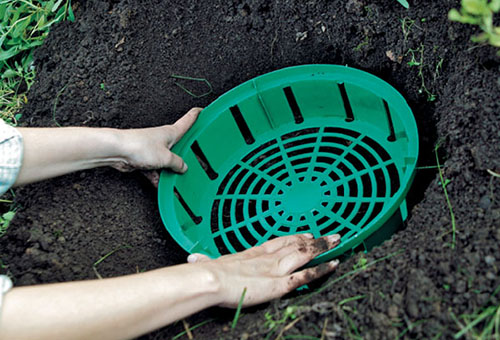
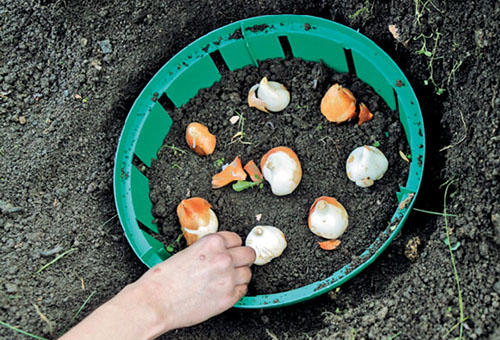
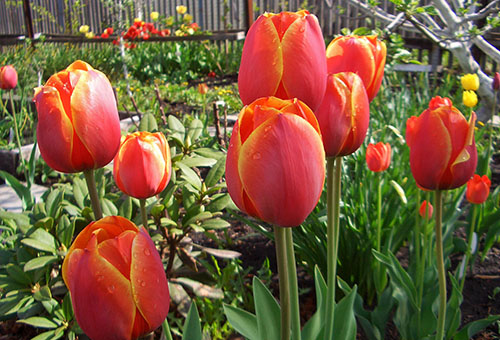
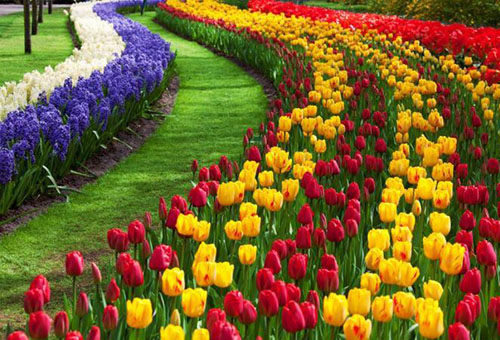
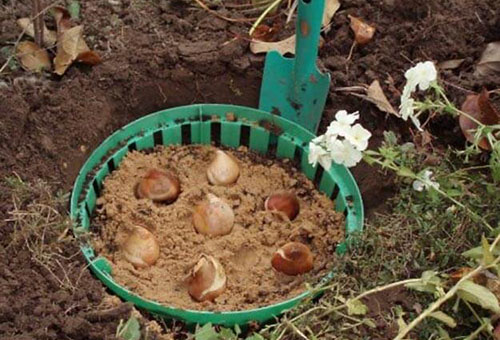


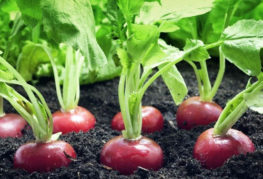
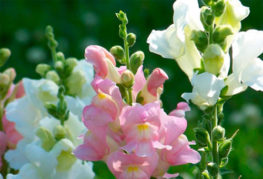
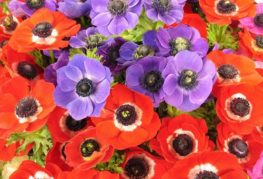
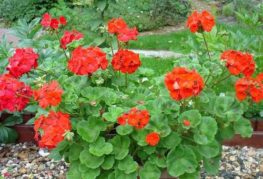
and will be published shortly.